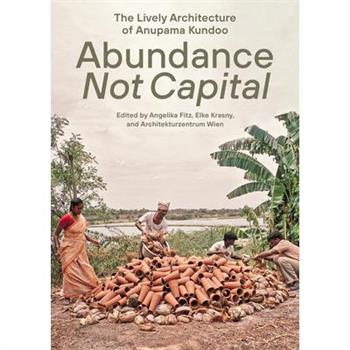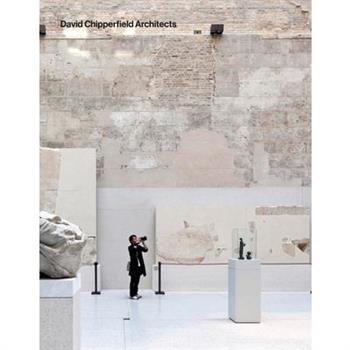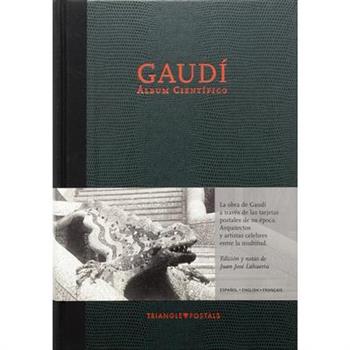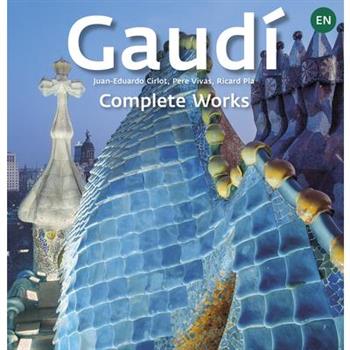Heritage Building Conservation
This book introduces a Maintainability Index of Heritage Buildings (MIHB) to support the decision-making and prioritisation process for the maintenance of heritage buildings.
A Treatise on Painted Glass, Shewing Its Applicablity to Every Style of Architecture
"A Treatise on Painted Glass, Shewing Its Applicability to Every Style of Architecture," by James Ballantine, explores the history, techniques, and artistic potential of stained glass. Published in 1845, this comprehensive work showcases the author's deep understanding and passion for painted glass, demonstrating its relevance to various architectural styles. The book delves into the methods of creating stunning stained glass designs and their integration into buildings. Featuring detailed descriptions and insightful observations, Ballantine's treatise serves as a valuable resource for artists, architects, and enthusiasts interested in the art of painted glass. Enhanced by lithographs, this volume captures the aesthetic and historical significance of stained glass as a decorative and architectural element.This work has been selected by scholars as being culturally important, and is part of the knowledge base of civilization as we know it. This work was reproduced from the original artifact, and remains as true to the original work as possible. Therefore, you will see the original copyright references, library stamps (as most of these works have been housed in our most important libraries around the world), and other notations in the work.This work is in the public domain in the United States of America, and possibly other nations. Within the United States, you may freely copy and distribute this work, as no entity (individual or corporate) has a copyright on the body of the work.As a reproduction of a historical artifact, this work may contain missing or blurred pages, poor pictures, errant marks, etc. Scholars believe, and we concur, that this work is important enough to be preserved, reproduced, and made generally available to the public. We appreciate your support of the preservation process, and thank you for being an important part of keeping this knowledge alive and relevant.
The Effective Small Home
"The Effective Small Home" (1917) offers timeless advice on designing and furnishing a small home for maximum comfort and efficiency. Mrs. Lilian Bayliss Green shares her insights on space planning, furniture selection, color schemes, and decorative accessories, guiding readers on how to create a stylish and functional living space that reflects their personal taste. This practical guide is filled with illustrations and detailed explanations, providing homeowners and designers with the tools to make the most of limited square footage. Whether you're renovating a compact apartment or building a cozy cottage, "The Effective Small Home" provides inspiration and guidance for creating a beautiful and inviting home that meets your needs.This work has been selected by scholars as being culturally important, and is part of the knowledge base of civilization as we know it. This work was reproduced from the original artifact, and remains as true to the original work as possible. Therefore, you will see the original copyright references, library stamps (as most of these works have been housed in our most important libraries around the world), and other notations in the work.This work is in the public domain in the United States of America, and possibly other nations. Within the United States, you may freely copy and distribute this work, as no entity (individual or corporate) has a copyright on the body of the work.As a reproduction of a historical artifact, this work may contain missing or blurred pages, poor pictures, errant marks, etc. Scholars believe, and we concur, that this work is important enough to be preserved, reproduced, and made generally available to the public. We appreciate your support of the preservation process, and thank you for being an important part of keeping this knowledge alive and relevant.
Artificial Intelligence for Urban Planning
This book aims to introduce planners to AI, outlining essential concepts, terminologies, and methodologies. AI now promises to reshape urban planning, but as with many technological innovations, AI also introduces ethical, practical, and organizational challenges. Understanding both AI's current capabilities and its limitations is essential for planners, even as we acknowledge the rapid and unpredictable nature of its evolution. Chapters address some of these complexities, not by providing definitive answers, but by introducing urban planners to core AI topics. The book shows how planners can effectively use AI in their daily practices, engage constructively with technical specialists, and critically assess the appropriateness of these technologies in different planning contexts. This book will be of interest to both urban planning professionals and researchers.
Cleveland Public Auditorium
A fascinating glimpse into Cleveland's past, the "Cleveland Public Auditorium Official Souvenir" offers a unique perspective on a landmark building. This souvenir provides a historical snapshot of the auditorium's early days, showcasing its architectural grandeur and significance to the city. It's a must-have for anyone interested in Cleveland history, architectural heritage, or the evolution of public spaces in America.Explore the pages and discover the stories behind this iconic structure, a testament to the city's cultural and civic pride. This souvenir serves as a valuable historical document and a celebration of Cleveland's architectural legacy.This work has been selected by scholars as being culturally important, and is part of the knowledge base of civilization as we know it. This work was reproduced from the original artifact, and remains as true to the original work as possible. Therefore, you will see the original copyright references, library stamps (as most of these works have been housed in our most important libraries around the world), and other notations in the work.This work is in the public domain in the United States of America, and possibly other nations. Within the United States, you may freely copy and distribute this work, as no entity (individual or corporate) has a copyright on the body of the work.As a reproduction of a historical artifact, this work may contain missing or blurred pages, poor pictures, errant marks, etc. Scholars believe, and we concur, that this work is important enough to be preserved, reproduced, and made generally available to the public. We appreciate your support of the preservation process, and thank you for being an important part of keeping this knowledge alive and relevant.
Palace Whispers
Embark on an unparalleled journey through the annals of time and architectural magnificence with "Palace Whispers: Tracing palatial architectural wonders from medieval to modern eras." This monumental exploration invites you to step beyond mere walls and into the very soul of structures that have long defined power, prestige, and human aspiration. From the rugged practicality of early medieval fortifications, designed for defense yet hinting at emerging royal grandeur, to the sophisticated elegance of modern royal dwellings, this volume meticulously unearths the layers of history, art, and innovation embedded within the world's most iconic palatial creations.Delve into the **foundations of royal grandeur**, witnessing the remarkable evolution from utilitarian strongholds to the genesis of distinct palatial styles. Discover how defensive needs gave way to designs embodying status and aesthetics, laying essential groundwork for future architectural marvels. This initial exploration sets a compelling stage, revealing the seeds from which intricate beauty would spectacularly blossom.Experience the transformative spirit of the Renaissance as it swept across Europe, particularly shaping the magnificent residences of Italy and France. Marvel at **Florentine opulence**, where artistic innovation met architectural prowess, giving birth to designs as much expressions of culture as of wealth.Traverse to behold the distinct character of French Ch璽teaux, structures that heralded a new architectural era, strikingly departing from their medieval predecessors. This period marks a profound shift, with the very ethos of humanism influencing designs that celebrated intellectual and artistic revival, making these palaces vibrant symbols of burgeoning cultural consciousness and formidable power.Prepare to be awestruck by the **Baroque majesty** that unfurled across Europe, a dramatic testament to boundless ambition and theatricality. The sheer scale and elaborate ornamentation of these structures were engineered to project unparalleled authority. Stand virtually beneath the towering influence of Versailles, a paragon of Baroque grandeur whose design echoes reverberated throughout the continent, inspiring countless imitations of imperial power. Witness how Vienna's imperial residences became physical manifestations of dynastic strength and prestige, each curve and gilding reinforcing the inherent right to rule through an unparalleled display of visual power and artistic mastery.The journey transcends continental boundaries, ushering you into the rich tapestry of **Asian imperial architecture**. Explore the meticulous layout and profound symbolism of the Forbidden City, understanding its central role in imperial power. Find tranquility amidst the serene beauty of Kyoto's imperial gardens, where nature and design converge in exquisite harmony. Discover the unique fusion of cultures within Mughal palaces, where Persian and Indian influences intertwine to create breathtaking testaments to art and authority. Furthermore, cast your gaze upon the diverse royal residences of Southeast Asia and the Korean palaces, each reflecting distinctive local cultures, beliefs, and an unparalleled mastery of form and function.Transitioning into an era of refined elegance, "Palace Whispers" guides you through the Neoclassical and Victorian periods. Witness the rise of **Neoclassicism**, characterized by its unwavering emphasis on order, symmetry, and a thoughtful reinterpretation of classical motifs, offering enduring dignity. Unlock the gates to architectural majesty; your throne awaits!
Abundance Not Capital
What if architecture were not an instrument of capital? How to imagine and build a non-extractivist and non-exploitative architecture. Capital's voracious appetite forces architecture into a regime of "never enough." The current realities of building involve extraction and exploitation, which, in turn, cause climate breakdown, environmental ruin, alienated labor conditions, and the destruction of local construction knowledge. But what if we could do architecture differently? What does non-extractivist architecture look like? In this book, Angelika Fitz and Elke Krasny introduce the concept of abundance to call for a paradigm shift in architecture. Using as its example the exceptional work of architect Anupama Kundoo, this book shows that non-extractivist and non-exploitative architecture is undeniably possible. Kundoo, born in Pune, India, weaves together innovative technological experimentation and traditional crafts. With careful consideration of local resources, building skills, climate, and environment, she makes buildings that embody spatial beauty and graceful materiality. Abundance Not Capital is a manifesto for creating a future-forward, alternative architecture. Contributors: Shumi Bose, Jordan Carver, Peggy Deamer, Madhavi Desai, Angelika Fitz, Rupali Gupte, Ranjit Hoskote, Elke Krasny, Charlotte Malterre-Barthes, Shannon Mattern, and Laurie Parsons. Copublished with Architekturzentrum Wien.
A Scheme for the Demolition of Three City Churches Volume Talbot Collection of British Pamphlets
"A Scheme for the Demolition of Three City Churches" presents a fascinating glimpse into Victorian-era debates surrounding urban development and religious heritage. Authored by H. W. Peek, this pamphlet, part of the Talbot Collection of British Pamphlets, likely argues against a proposed plan to demolish three churches within a specific city. The work offers insights into the architectural and religious values of the time, reflecting concerns about preserving historical landmarks amidst the pressures of modernization and urban expansion.This pamphlet is a valuable resource for understanding the social, religious, and architectural history of Victorian Britain, offering a unique perspective on the challenges and controversies that shaped its urban landscape.This work has been selected by scholars as being culturally important, and is part of the knowledge base of civilization as we know it. This work was reproduced from the original artifact, and remains as true to the original work as possible. Therefore, you will see the original copyright references, library stamps (as most of these works have been housed in our most important libraries around the world), and other notations in the work.This work is in the public domain in the United States of America, and possibly other nations. Within the United States, you may freely copy and distribute this work, as no entity (individual or corporate) has a copyright on the body of the work.As a reproduction of a historical artifact, this work may contain missing or blurred pages, poor pictures, errant marks, etc. Scholars believe, and we concur, that this work is important enough to be preserved, reproduced, and made generally available to the public. We appreciate your support of the preservation process, and thank you for being an important part of keeping this knowledge alive and relevant.
The Renaissance of Roman Architecture
The Renaissance of Roman Architecture, Volume 1, by Thomas Graham Jackson, explores the revival and transformation of classical Roman architectural styles during the Renaissance period. This detailed study examines the key elements, influences, and notable examples of Renaissance architecture in Rome, offering readers a comprehensive understanding of the era's artistic and cultural context. Jackson's work provides valuable insights into the enduring legacy of Roman architectural principles and their impact on subsequent architectural movements. It remains a significant resource for students, scholars, and anyone interested in the history of architecture and the artistic achievements of the Renaissance.This work has been selected by scholars as being culturally important, and is part of the knowledge base of civilization as we know it. This work was reproduced from the original artifact, and remains as true to the original work as possible. Therefore, you will see the original copyright references, library stamps (as most of these works have been housed in our most important libraries around the world), and other notations in the work.This work is in the public domain in the United States of America, and possibly other nations. Within the United States, you may freely copy and distribute this work, as no entity (individual or corporate) has a copyright on the body of the work.As a reproduction of a historical artifact, this work may contain missing or blurred pages, poor pictures, errant marks, etc. Scholars believe, and we concur, that this work is important enough to be preserved, reproduced, and made generally available to the public. We appreciate your support of the preservation process, and thank you for being an important part of keeping this knowledge alive and relevant.
Old English and French Ornaments; Comprising 244 Designs ... by Chippendale, I. Jones, Johnson, Lock, and Pether ... Collected and Republished by J. W
Title: Old English and French ornaments; comprising 244 Designs ... by Chippendale, I. Jones, Johnson, Lock, and Pether ... Collected and republished by J. W.Publisher: British Library, Historical Print EditionsThe British Library is the national library of the United Kingdom. It is one of the world's largest research libraries holding over 150 million items in all known languages and formats: books, journals, newspapers, sound recordings, patents, maps, stamps, prints and much more. Its collections include around 14 million books, along with substantial additional collections of manuscripts and historical items dating back as far as 300 BC.The GENERAL HISTORICAL collection includes books from the British Library digitised by Microsoft. This varied collection includes material that gives readers a 19th century view of the world. Topics include health, education, economics, agriculture, environment, technology, culture, politics, labour and industry, mining, penal policy, and social order. ++++The below data was compiled from various identification fields in the bibliographic record of this title. This data is provided as an additional tool in helping to insure edition identification: ++++ British Library Weale, John; Chippendale, Thomas; 1858]. 4?簞. 1295.i.7.This work has been selected by scholars as being culturally important, and is part of the knowledge base of civilization as we know it. This work was reproduced from the original artifact, and remains as true to the original work as possible. Therefore, you will see the original copyright references, library stamps (as most of these works have been housed in our most important libraries around the world), and other notations in the work.This work is in the public domain in the United States of America, and possibly other nations. Within the United States, you may freely copy and distribute this work, as no entity (individual or corporate) has a copyright on the body of the work.As a reproduction of a historical artifact, this work may contain missing or blurred pages, poor pictures, errant marks, etc. Scholars believe, and we concur, that this work is important enough to be preserved, reproduced, and made generally available to the public. We appreciate your support of the preservation process, and thank you for being an important part of keeping this knowledge alive and relevant.
Some old Masters of Greek Architecture
"Some Old Masters of Greek Architecture" explores the lives and works of significant figures who shaped the architectural landscape of ancient Greece. Harry Douglas offers insights into the design principles, construction techniques, and aesthetic ideals that defined Greek architecture. This book serves as a valuable resource for understanding the enduring influence of Greek architectural forms and their impact on subsequent architectural movements.This work has been selected by scholars as being culturally important, and is part of the knowledge base of civilization as we know it. This work was reproduced from the original artifact, and remains as true to the original work as possible. Therefore, you will see the original copyright references, library stamps (as most of these works have been housed in our most important libraries around the world), and other notations in the work.This work is in the public domain in the United States of America, and possibly other nations. Within the United States, you may freely copy and distribute this work, as no entity (individual or corporate) has a copyright on the body of the work.As a reproduction of a historical artifact, this work may contain missing or blurred pages, poor pictures, errant marks, etc. Scholars believe, and we concur, that this work is important enough to be preserved, reproduced, and made generally available to the public. We appreciate your support of the preservation process, and thank you for being an important part of keeping this knowledge alive and relevant.
Normandy, its Gothic Architecture and History
Title: Normandy, its Gothic Architecture and History: as illustrated by twenty-five photographs from buildings in Rouen, Caen, Mantes, Bayeux, and Falaise. A sketch.Publisher: British Library, Historical Print EditionsThe British Library is the national library of the United Kingdom. It is one of the world's largest research libraries holding over 150 million items in all known languages and formats: books, journals, newspapers, sound recordings, patents, maps, stamps, prints and much more. Its collections include around 14 million books, along with substantial additional collections of manuscripts and historical items dating back as far as 300 BC.The HISTORY OF TRAVEL collection includes books from the British Library digitised by Microsoft. This collection contains personal narratives, travel guides and documentary accounts by Victorian travelers, male and female. Also included are pamphlets, travel guides, and personal narratives of trips to and around the Americas, the Indies, Europe, Africa and the Middle East. ++++The below data was compiled from various identification fields in the bibliographic record of this title. This data is provided as an additional tool in helping to insure edition identification: ++++ British Library Stephens, Frederic George; 1865. 4?簞. 10173.bbb.19.This work has been selected by scholars as being culturally important, and is part of the knowledge base of civilization as we know it. This work was reproduced from the original artifact, and remains as true to the original work as possible. Therefore, you will see the original copyright references, library stamps (as most of these works have been housed in our most important libraries around the world), and other notations in the work.This work is in the public domain in the United States of America, and possibly other nations. Within the United States, you may freely copy and distribute this work, as no entity (individual or corporate) has a copyright on the body of the work.As a reproduction of a historical artifact, this work may contain missing or blurred pages, poor pictures, errant marks, etc. Scholars believe, and we concur, that this work is important enough to be preserved, reproduced, and made generally available to the public. We appreciate your support of the preservation process, and thank you for being an important part of keeping this knowledge alive and relevant.
European Architecture A Historical Study
"European Architecture: A Historical Study" by Russell Sturgis offers a comprehensive exploration of architectural styles and developments across Europe. Published in 1896, this enduring study provides insights into the historical context and aesthetic qualities of various architectural movements. Sturgis's detailed analysis makes this book an invaluable resource for students, architects, and anyone interested in understanding the rich tapestry of European architectural history.This work has been selected by scholars as being culturally important, and is part of the knowledge base of civilization as we know it. This work was reproduced from the original artifact, and remains as true to the original work as possible. Therefore, you will see the original copyright references, library stamps (as most of these works have been housed in our most important libraries around the world), and other notations in the work.This work is in the public domain in the United States of America, and possibly other nations. Within the United States, you may freely copy and distribute this work, as no entity (individual or corporate) has a copyright on the body of the work.As a reproduction of a historical artifact, this work may contain missing or blurred pages, poor pictures, errant marks, etc. Scholars believe, and we concur, that this work is important enough to be preserved, reproduced, and made generally available to the public. We appreciate your support of the preservation process, and thank you for being an important part of keeping this knowledge alive and relevant.
A History Of Ornament Renaissance And Modern
A History of Ornament, Renaissance and Modern explores the evolution of decorative motifs and styles from the Renaissance period through the early 20th century. Authored by A.D.F. Hamlin, this comprehensive volume examines the key characteristics, influences, and applications of ornament in architecture, interiors, and applied arts. The book provides a detailed survey of Renaissance ornament, tracing its revival of classical forms and its subsequent development across Europe. It then transitions to modern ornament, analyzing the impact of new materials, technologies, and artistic movements on design. The text explores various styles such as Baroque, Rococo, Neoclassical, and Art Nouveau. This work will appeal to architects, designers, art historians, and anyone interested in the rich history of decorative arts.This work has been selected by scholars as being culturally important, and is part of the knowledge base of civilization as we know it. This work was reproduced from the original artifact, and remains as true to the original work as possible. Therefore, you will see the original copyright references, library stamps (as most of these works have been housed in our most important libraries around the world), and other notations in the work.This work is in the public domain in the United States of America, and possibly other nations. Within the United States, you may freely copy and distribute this work, as no entity (individual or corporate) has a copyright on the body of the work.As a reproduction of a historical artifact, this work may contain missing or blurred pages, poor pictures, errant marks, etc. Scholars believe, and we concur, that this work is important enough to be preserved, reproduced, and made generally available to the public. We appreciate your support of the preservation process, and thank you for being an important part of keeping this knowledge alive and relevant.
The Ecclesiologist
The Ecclesiologist, Volume 26, offers a detailed look at the principles and practices of church architecture and design during the mid-19th century. This volume presents a fascinating snapshot of Victorian-era ecclesiastical tastes, reflecting the broader religious and cultural movements of the time. Delving into the specifics of church layouts, ornamentation, and the incorporation of historical styles, the publication provides insights into the prevailing aesthetic and theological considerations that shaped religious spaces. This book is a valuable resource for architectural historians, students of religious studies, and anyone interested in the history of church design and the revival of Gothic architecture. Discover the arguments that defined ecclesiastical construction and restoration in Victorian England, and explore the enduring impact of these ideas on religious buildings worldwide.This work has been selected by scholars as being culturally important, and is part of the knowledge base of civilization as we know it. This work was reproduced from the original artifact, and remains as true to the original work as possible. Therefore, you will see the original copyright references, library stamps (as most of these works have been housed in our most important libraries around the world), and other notations in the work.This work is in the public domain in the United States of America, and possibly other nations. Within the United States, you may freely copy and distribute this work, as no entity (individual or corporate) has a copyright on the body of the work.As a reproduction of a historical artifact, this work may contain missing or blurred pages, poor pictures, errant marks, etc. Scholars believe, and we concur, that this work is important enough to be preserved, reproduced, and made generally available to the public. We appreciate your support of the preservation process, and thank you for being an important part of keeping this knowledge alive and relevant.
Corpus Christi, Maiden Lane
'Corpus Christi, Maiden Lane' is a captivating journey through 150 years of Corpus Christi Catholic Church, nestled in the heart of London's Covent Garden. This beautifully researched volume, penned by Cesare Ferrari and Anthony Delarue, with contributions from the Fathers of the London Oratory, explores the rich history of this remarkable church from its origins as part of the kitchen gardens of Westminster Abbey to its present status as a beloved Shrine of the Blessed Sacrament. The book delves into the church's foundation under the guidance of Cardinal Manning in the 19th century, its architectural splendour, and its role as a spiritual haven in one of London's most vibrant areas. Readers will discover the fascinating stories of the people who built and sustained the church, from the Oratorians who first ministered in the area, to the market traders and theatre folk who found solace within its walls. With detailed historical accounts, vivid descriptions of the church's restoration, and an exploration of its enduring role in the Diocese of Westminster, 'Corpus Christi, Maiden Lane' is not just a chronicle of a building, but a testament to the faith, resilience, and devotion that have defined this sanctuary for generations. This 150th Anniversary edition is a must-read for anyone interested in the intersection of faith, history, and the ever-evolving story of Catholicism in London.
The Ecclesiologist
The Ecclesiologist, Volume 26, offers a detailed look at the principles and practices of church architecture and design during the mid-19th century. This volume presents a fascinating snapshot of Victorian-era ecclesiastical tastes, reflecting the broader religious and cultural movements of the time. Delving into the specifics of church layouts, ornamentation, and the incorporation of historical styles, the publication provides insights into the prevailing aesthetic and theological considerations that shaped religious spaces. This book is a valuable resource for architectural historians, students of religious studies, and anyone interested in the history of church design and the revival of Gothic architecture. Discover the arguments that defined ecclesiastical construction and restoration in Victorian England, and explore the enduring impact of these ideas on religious buildings worldwide.This work has been selected by scholars as being culturally important, and is part of the knowledge base of civilization as we know it. This work was reproduced from the original artifact, and remains as true to the original work as possible. Therefore, you will see the original copyright references, library stamps (as most of these works have been housed in our most important libraries around the world), and other notations in the work.This work is in the public domain in the United States of America, and possibly other nations. Within the United States, you may freely copy and distribute this work, as no entity (individual or corporate) has a copyright on the body of the work.As a reproduction of a historical artifact, this work may contain missing or blurred pages, poor pictures, errant marks, etc. Scholars believe, and we concur, that this work is important enough to be preserved, reproduced, and made generally available to the public. We appreciate your support of the preservation process, and thank you for being an important part of keeping this knowledge alive and relevant.
Itsuko Hasegawa: Shonandai - Exposing the World
Toronto Interiors
A survey of the leading interior designers and architects who are collectively defining the city's signature style. As perhaps the most diverse city in the world, Toronto is a veritable patchwork of cultures, styles, languages, and neighbourhoods--each with its own distinct architecture. With heritage rowhouses in Cabbagetown, glass towers overlooking Lake Ontario, narrow Victorian Bay-and-Gables in the Annex, grand Georgians in Rosedale, and wartime bungalows on the edges of the city, there truly is something for everyone. The interiors of these distinct home styles are no less unique, but, when taken together they exemplify the push and pull between heritage and modern sensibilities that has created a true design movement in this city on the lake. In Toronto Interiors, design writer Catherine Macintosh profiles 30 established and emerging local studios that are evolving the living spaces and streetscapes for the next generation of Torontonians. Whether bringing their talents to innovative renovations or new builds, these studios are crafting homes that are beautiful but not precious; homes that are made for how we live now. Within these deeply personal and highly functional spaces are moments of true creative brilliance--the artistic use of light, the seamless interplay between indoors and out, unique focal points, a careful mix of natural materials, and a delicate balance between old and new. The exemplary homes in Toronto Interiors feel at ease in their settings, adding to the city's unique urban landscape. Toronto Interiors spotlights a moment in time when high design and individuality are expertly applied by designers challenging the status quo, inspiring readers to look at their own spaces through a new lens. Featuring 90 projects brought to life in stunning full-colour photography, Toronto Interiors is a book to both read and dream on.
Another Modernism
Filling an important gap in design history, Another Modernism examines how domestic space was conceived by the US home economics movement in the first half of the 20th century. In doing so, it tells the story of how home economists-mainly women-developed design that challenged the traditional architecture of American farm communities and countered the approach of modernist architects. Uncovering unacknowledged contributions of women to domestic architecture and design history, it reveals early instances of participation, sustainability, and accommodating the disabled body in domestic design. In contrast to the canonical modernist model of space, which is primarily visual, home economists centered on a user who interacts with the interior in a tactile, bodily way. Although both strove for efficiency, they understood it differently: whereas for many of the mainstream modernists the term 'efficiency' meant functionalist aesthetics, for home economists it signified design solutions intended to ease the labor of an average American homemaker. The book argues that the home economists' focus on tactility, the user's corporeality, movement, access, preferences, and her engagement in the design process, constituted an alternative model of modern architecture - a popular and largely rural modernism centered on the specificity of the female user and her personal experience of the domestic interior. Based on little-known archival material, and with an emphasis on mostly female researchers, designers, and users/occupants, Another Modernism will appeal to architects, design historians, and anyone interested in gender, women's and disability studies, as well as non-visual approaches to design.
Selby Abbey Church
"Selby Abbey Church" offers a fascinating glimpse into one of Yorkshire's most significant religious landmarks. Dating back to the Benedictine monastery founded in 1069, Selby Abbey stands as a testament to Norman and Gothic architectural styles, reflecting centuries of spiritual and historical importance. This detailed account explores the abbey's rich past, from its founding and construction to its role in local and national history. Discover the architectural marvels, the stories of its monks, and the significance of this iconic structure. This book is an invaluable resource for those interested in religious history, architectural heritage, and the cultural landscape of England.This work has been selected by scholars as being culturally important, and is part of the knowledge base of civilization as we know it. This work was reproduced from the original artifact, and remains as true to the original work as possible. Therefore, you will see the original copyright references, library stamps (as most of these works have been housed in our most important libraries around the world), and other notations in the work.This work is in the public domain in the United States of America, and possibly other nations. Within the United States, you may freely copy and distribute this work, as no entity (individual or corporate) has a copyright on the body of the work.As a reproduction of a historical artifact, this work may contain missing or blurred pages, poor pictures, errant marks, etc. Scholars believe, and we concur, that this work is important enough to be preserved, reproduced, and made generally available to the public. We appreciate your support of the preservation process, and thank you for being an important part of keeping this knowledge alive and relevant.
The State Buildings Of The World's Fair
Explore the grand architecture of the state buildings at the World's Fair with "The State Buildings Of The World's Fair," a historical record from 1893. This book provides a glimpse into the architectural styles and ambitions showcased by each state. Discover the craftsmanship and design that represented the spirit of the late 19th century United States.Published by Adolph Wittemann, this work captures a unique moment in American history, celebrating the innovation and artistry on display at this landmark event. A valuable resource for historians, architects, and anyone interested in the cultural heritage of the World's Fair.This work has been selected by scholars as being culturally important, and is part of the knowledge base of civilization as we know it. This work was reproduced from the original artifact, and remains as true to the original work as possible. Therefore, you will see the original copyright references, library stamps (as most of these works have been housed in our most important libraries around the world), and other notations in the work.This work is in the public domain in the United States of America, and possibly other nations. Within the United States, you may freely copy and distribute this work, as no entity (individual or corporate) has a copyright on the body of the work.As a reproduction of a historical artifact, this work may contain missing or blurred pages, poor pictures, errant marks, etc. Scholars believe, and we concur, that this work is important enough to be preserved, reproduced, and made generally available to the public. We appreciate your support of the preservation process, and thank you for being an important part of keeping this knowledge alive and relevant.
Autodesk Revit 2026 Home Design (COLORED)
Begin your home design journey with this easy-to-follow introduction to Revit 2026. Written for beginners, this guide walks you step-by-step through the fundamentals of residential modeling. Learn how to set up levels, draw walls and footings, place doors, windows, floors, roofs, ceilings, and add essential fixtures. Through practical, hands-on lessons, you'll also discover how to generate elevations, sections, site plans, sheets, and realistic renderings.Perfect for first-time Revit users or anyone who wants a solid foundation, this book provides clear instructions, useful tips, and a straightforward approach to make designing in Revit 2026 simple.
Gaud穩
This book compiles, with scientific rigour, 135 postcards published in the period in which Gaud穩 was working, spreading Gaud穩's work around the world along with the intimate messages of its senders. In Spanish, English & French
Gaud穩
The power of Antoni Gaud穩 the architect resides in his prolific invention of shapes. The variety and expressiveness in the shapes themselves, such as his sculptures or paintings, already gave a glimpse of the modern artist he was. But, in fact, they are the outcome of extraordinary structural inventions, an imaginative use of materials and an unbeatable sense of decoration..., three qualities that are the defining traits of a master architect." (George R Collins). This book shows the mastery and genius of Gaud穩 at its fullest, through all his works with the best photographs, texts describing each work, elevation maps, models isometric projections and exclusive videos. "Gaud穩, the Unique Architect" is an essential book to discover the works of a world-famous architect and brilliant creator. This was recognised by the UNESCO when it included almost all his buildings as World Heritage.
The State Buildings Of The World's Fair
Explore the grand architecture of the state buildings at the World's Fair with "The State Buildings Of The World's Fair," a historical record from 1893. This book provides a glimpse into the architectural styles and ambitions showcased by each state. Discover the craftsmanship and design that represented the spirit of the late 19th century United States.Published by Adolph Wittemann, this work captures a unique moment in American history, celebrating the innovation and artistry on display at this landmark event. A valuable resource for historians, architects, and anyone interested in the cultural heritage of the World's Fair.This work has been selected by scholars as being culturally important, and is part of the knowledge base of civilization as we know it. This work was reproduced from the original artifact, and remains as true to the original work as possible. Therefore, you will see the original copyright references, library stamps (as most of these works have been housed in our most important libraries around the world), and other notations in the work.This work is in the public domain in the United States of America, and possibly other nations. Within the United States, you may freely copy and distribute this work, as no entity (individual or corporate) has a copyright on the body of the work.As a reproduction of a historical artifact, this work may contain missing or blurred pages, poor pictures, errant marks, etc. Scholars believe, and we concur, that this work is important enough to be preserved, reproduced, and made generally available to the public. We appreciate your support of the preservation process, and thank you for being an important part of keeping this knowledge alive and relevant.
A Treatise on Painted Glass, Shewing Its Applicablity to Every Style of Architecture
"A Treatise on Painted Glass, Shewing Its Applicability to Every Style of Architecture," by James Ballantine, explores the history, techniques, and artistic potential of stained glass. Published in 1845, this comprehensive work showcases the author's deep understanding and passion for painted glass, demonstrating its relevance to various architectural styles. The book delves into the methods of creating stunning stained glass designs and their integration into buildings. Featuring detailed descriptions and insightful observations, Ballantine's treatise serves as a valuable resource for artists, architects, and enthusiasts interested in the art of painted glass. Enhanced by lithographs, this volume captures the aesthetic and historical significance of stained glass as a decorative and architectural element.This work has been selected by scholars as being culturally important, and is part of the knowledge base of civilization as we know it. This work was reproduced from the original artifact, and remains as true to the original work as possible. Therefore, you will see the original copyright references, library stamps (as most of these works have been housed in our most important libraries around the world), and other notations in the work.This work is in the public domain in the United States of America, and possibly other nations. Within the United States, you may freely copy and distribute this work, as no entity (individual or corporate) has a copyright on the body of the work.As a reproduction of a historical artifact, this work may contain missing or blurred pages, poor pictures, errant marks, etc. Scholars believe, and we concur, that this work is important enough to be preserved, reproduced, and made generally available to the public. We appreciate your support of the preservation process, and thank you for being an important part of keeping this knowledge alive and relevant.
Selby Abbey Church
"Selby Abbey Church" offers a fascinating glimpse into one of Yorkshire's most significant religious landmarks. Dating back to the Benedictine monastery founded in 1069, Selby Abbey stands as a testament to Norman and Gothic architectural styles, reflecting centuries of spiritual and historical importance. This detailed account explores the abbey's rich past, from its founding and construction to its role in local and national history. Discover the architectural marvels, the stories of its monks, and the significance of this iconic structure. This book is an invaluable resource for those interested in religious history, architectural heritage, and the cultural landscape of England.This work has been selected by scholars as being culturally important, and is part of the knowledge base of civilization as we know it. This work was reproduced from the original artifact, and remains as true to the original work as possible. Therefore, you will see the original copyright references, library stamps (as most of these works have been housed in our most important libraries around the world), and other notations in the work.This work is in the public domain in the United States of America, and possibly other nations. Within the United States, you may freely copy and distribute this work, as no entity (individual or corporate) has a copyright on the body of the work.As a reproduction of a historical artifact, this work may contain missing or blurred pages, poor pictures, errant marks, etc. Scholars believe, and we concur, that this work is important enough to be preserved, reproduced, and made generally available to the public. We appreciate your support of the preservation process, and thank you for being an important part of keeping this knowledge alive and relevant.
Die Kirche Des Heiligen Laurentius
"Die Kirche Des Heiligen Laurentius" (The Church of Saint Lawrence) offers a detailed examination of this significant religious structure. Including architectural plans, elevations, and a depiction of the sacrament house by Adam Kraft, this book provides valuable insights into the church's design and historical context.Authored by Johann Wolfgang Hilpert, the book explores the architecture and historical importance of the Saint Lawrence Church. With its detailed illustrations and historical perspective, this volume will appeal to those interested in religious architecture, European history, and the works of Adam Kraft.This work has been selected by scholars as being culturally important, and is part of the knowledge base of civilization as we know it. This work was reproduced from the original artifact, and remains as true to the original work as possible. Therefore, you will see the original copyright references, library stamps (as most of these works have been housed in our most important libraries around the world), and other notations in the work.This work is in the public domain in the United States of America, and possibly other nations. Within the United States, you may freely copy and distribute this work, as no entity (individual or corporate) has a copyright on the body of the work.As a reproduction of a historical artifact, this work may contain missing or blurred pages, poor pictures, errant marks, etc. Scholars believe, and we concur, that this work is important enough to be preserved, reproduced, and made generally available to the public. We appreciate your support of the preservation process, and thank you for being an important part of keeping this knowledge alive and relevant.
Preliminary Studies For A City Plan For Omaha
Preliminary Studies For A City Plan For Omaha, originally published in 1917, offers a fascinating glimpse into the early days of urban planning in the United States. Compiled by the City Planning Commission, this historical document outlines the initial considerations and proposals for the systematic development of Omaha, Nebraska. The book provides valuable insight into the challenges and opportunities faced by city planners during a period of rapid growth and industrialization. It showcases the forward-thinking approaches used to address issues such as transportation, housing, and public spaces. A significant resource for students and researchers of urban history, architecture, and municipal governance, "Preliminary Studies" serves as a testament to the enduring importance of thoughtful city planning.This work has been selected by scholars as being culturally important, and is part of the knowledge base of civilization as we know it. This work was reproduced from the original artifact, and remains as true to the original work as possible. Therefore, you will see the original copyright references, library stamps (as most of these works have been housed in our most important libraries around the world), and other notations in the work.This work is in the public domain in the United States of America, and possibly other nations. Within the United States, you may freely copy and distribute this work, as no entity (individual or corporate) has a copyright on the body of the work.As a reproduction of a historical artifact, this work may contain missing or blurred pages, poor pictures, errant marks, etc. Scholars believe, and we concur, that this work is important enough to be preserved, reproduced, and made generally available to the public. We appreciate your support of the preservation process, and thank you for being an important part of keeping this knowledge alive and relevant.
Alhambra. Nasrid Palaces
The Nasrid Palaces are the real heart of the Alhambra, a masterpiece of universal art and a UNESCO World Heritage Site since 1984. Built throughout the 14th century, the Mexuar, the Palace of Comares and the Palace of the Lions, residences of the rulers of the Nasrid dynasty, are striking for the contrast between their austere exterior walls and the interior courtyards and rooms in which the artists gave free reinto their talent, bringing together in harmony the tiled plinths, the mural plasterwork and the coffered ceilings, all with geometric, epigraphic and vegetal motifs.This book shows how the harmony between architecture, decoration and water reaches the highest heights in the Nasrid Palaces.
The Five Orders Of Architecture
"The Five Orders of Architecture" by Vignola is a timeless treatise on classical architectural principles. This essential guide, originally published in the Renaissance, meticulously outlines the characteristics and proportions of the Tuscan, Doric, Ionic, Corinthian, and Composite orders. Architects, students, and enthusiasts will find detailed illustrations and explanations that demystify the foundations of classical design. Vignola's systematic approach makes this book an invaluable resource for understanding the enduring beauty and harmony of classical architecture. Explore the fundamental elements that have shaped buildings for centuries and continue to influence contemporary design. Discover why "The Five Orders of Architecture" remains a cornerstone text for anyone seeking to master the art of architectural composition.This work has been selected by scholars as being culturally important, and is part of the knowledge base of civilization as we know it. This work was reproduced from the original artifact, and remains as true to the original work as possible. Therefore, you will see the original copyright references, library stamps (as most of these works have been housed in our most important libraries around the world), and other notations in the work.This work is in the public domain in the United States of America, and possibly other nations. Within the United States, you may freely copy and distribute this work, as no entity (individual or corporate) has a copyright on the body of the work.As a reproduction of a historical artifact, this work may contain missing or blurred pages, poor pictures, errant marks, etc. Scholars believe, and we concur, that this work is important enough to be preserved, reproduced, and made generally available to the public. We appreciate your support of the preservation process, and thank you for being an important part of keeping this knowledge alive and relevant.
Creating a Beautiful Home
Rediscover timeless elegance with Alexandra Stoddard's "Creating a Beautiful Home." Originally published in 1922, this book offers enduring principles of interior design that remain relevant today. Stoddard's classic advice guides readers in transforming their living spaces into havens of beauty and comfort. Explore topics ranging from color schemes to furniture arrangement, all presented with a focus on creating harmonious and inviting environments. Whether you're renovating a historic home or simply seeking to infuse your space with classic charm, "Creating a Beautiful Home" provides invaluable inspiration and practical tips.This work has been selected by scholars as being culturally important, and is part of the knowledge base of civilization as we know it. This work was reproduced from the original artifact, and remains as true to the original work as possible. Therefore, you will see the original copyright references, library stamps (as most of these works have been housed in our most important libraries around the world), and other notations in the work.This work is in the public domain in the United States of America, and possibly other nations. Within the United States, you may freely copy and distribute this work, as no entity (individual or corporate) has a copyright on the body of the work.As a reproduction of a historical artifact, this work may contain missing or blurred pages, poor pictures, errant marks, etc. Scholars believe, and we concur, that this work is important enough to be preserved, reproduced, and made generally available to the public. We appreciate your support of the preservation process, and thank you for being an important part of keeping this knowledge alive and relevant.
The Cathedrals of England and Wales. First-[third] Series
"The Cathedrals of England and Wales" by Thomas Francis Bumpus offers a detailed historical and architectural exploration of these iconic structures. This first volume delves into the rich heritage and artistic significance of various cathedrals, providing readers with insights into their construction, design elements, and the historical events that shaped them. Bumpus's work serves as both a historical record and a travel guide, inviting readers to appreciate the cultural and religious importance of these landmarks. The book's enduring appeal lies in its accessible style and comprehensive coverage, making it a valuable resource for anyone interested in British history, architecture, and ecclesiastical studies.This work has been selected by scholars as being culturally important, and is part of the knowledge base of civilization as we know it. This work was reproduced from the original artifact, and remains as true to the original work as possible. Therefore, you will see the original copyright references, library stamps (as most of these works have been housed in our most important libraries around the world), and other notations in the work.This work is in the public domain in the United States of America, and possibly other nations. Within the United States, you may freely copy and distribute this work, as no entity (individual or corporate) has a copyright on the body of the work.As a reproduction of a historical artifact, this work may contain missing or blurred pages, poor pictures, errant marks, etc. Scholars believe, and we concur, that this work is important enough to be preserved, reproduced, and made generally available to the public. We appreciate your support of the preservation process, and thank you for being an important part of keeping this knowledge alive and relevant.
The Five Orders Of Architecture According To Giacoma Barozzio Of Vignola
The Five Orders Of Architecture According To Giacoma Barozzio Of Vignola remains a foundational text for students and practitioners of classical architecture. This edition presents Vignola's detailed exposition of the Doric, Ionic, Corinthian, Tuscan, and Composite orders, offering precise instructions and measurements essential for understanding and replicating these classical forms. Augmented with descriptions of the Greek orders, this volume provides a comprehensive overview of architectural principles that have influenced building design for centuries. Architects, historians, and anyone with an interest in classical design will find this a valuable resource. Discover the timeless principles that continue to inspire architectural excellence.This work has been selected by scholars as being culturally important, and is part of the knowledge base of civilization as we know it. This work was reproduced from the original artifact, and remains as true to the original work as possible. Therefore, you will see the original copyright references, library stamps (as most of these works have been housed in our most important libraries around the world), and other notations in the work.This work is in the public domain in the United States of America, and possibly other nations. Within the United States, you may freely copy and distribute this work, as no entity (individual or corporate) has a copyright on the body of the work.As a reproduction of a historical artifact, this work may contain missing or blurred pages, poor pictures, errant marks, etc. Scholars believe, and we concur, that this work is important enough to be preserved, reproduced, and made generally available to the public. We appreciate your support of the preservation process, and thank you for being an important part of keeping this knowledge alive and relevant.
The Palau de la M繳sica Catalana
The architectural work of Llu穩s Dom癡nech i Montaner culminates in the Palau de la M繳sica Catalana, a Modernist jewel and musical centre of Barcelona since 1908.If its fa癟ade is stunning, the concert hall, with its curious structure of temple and theatre, is one of the most beautiful in the world.
La Mola
In Menorca, the Fortress of Isabel II, built between 1850 and 1875, overlooks the estuary of the Port de Ma籀. Through the Queen's gateway you will be able to gain access to all the secrets of the military fortification. The Castle of La Mola is a prodigious architectural complex, strengthened by casemates, moats, bridges and circular buildings. An unforgettable history lesson that includes the visit to the magnificent labyrinth of underground galleries.In Catalan, Spanish & English
Gaud穩
The best visual guide to start learning about the artistic world of Antoni Gaud穩. It contains the keys to each of his architectural works, accompanied by specific and updated images and includes a text by the specialist Juan Eduardo Cirlot. The classic of Triangle Books now in its larger new format, with a new design and new photographs.
Mies Van Der Rohe Pavilion
Mies van der Rohe gave a master class in modernity and style with his German Pavilion, built for the International Exhibition of Barcelona of 1929. The architect distilled his "less is more" concept to create this singular space of light and shade, glass and marble, air and water. This monographic work describes it to us in all its plenitude.
Jvjol & Gaud穩
The intervention of Josep Maria Jujol in the buildings of Antoni Gaud穩 marked a decisive turning point in the Gaudian work. In this book Jujol's son, Jos矇 Ma Jujol junior, portrays the personal and artistic relationship between the two brilliant architects throughout their 20 years of collaboration, initiated on the main fa癟ade of Casa Batll籀 in 1906 and which ended tragically due to the accidental death of Gaud穩 in 1926.Thanks to his research work of both direct (his own father, interviews with assistants and disciples of Gaud穩...) and documental sources, we can identify and value the determinant interventions of Jujol in Gaud穩's work and through which (graphic art of emphatic vibration, "chromatic torment"of great power and lyricism, avant-garde collages in the trencad穩s...) many creations by Gaud穩 are identified today.In Spanish & English
Casa Museo Sorolla
The Casa Sorolla represents the painter's world and brings together everything that surrounded and interested him, the things that inspired him, that he created, enjoyed and lived with.In Spanish & English
Casa Mas籀
Casa Mas籀 is the house where Rafael Mas籀 (1880-1935) was born, one of the most important works of his architecture and the only one of the iconic houses over the river in Girona that is open to the public. The house still has all the furniture and decorations from the noucentista times and offers some unique views over the city. The book, besides a tour around the inside of this house, also includes articles on the history of the Mas籀 family and the works this architect did on his house
The Cathedrals of England and Wales. First-[third] Series
"The Cathedrals of England and Wales" by Thomas Francis Bumpus offers a detailed historical and architectural exploration of these iconic structures. This first volume delves into the rich heritage and artistic significance of various cathedrals, providing readers with insights into their construction, design elements, and the historical events that shaped them. Bumpus's work serves as both a historical record and a travel guide, inviting readers to appreciate the cultural and religious importance of these landmarks. The book's enduring appeal lies in its accessible style and comprehensive coverage, making it a valuable resource for anyone interested in British history, architecture, and ecclesiastical studies.This work has been selected by scholars as being culturally important, and is part of the knowledge base of civilization as we know it. This work was reproduced from the original artifact, and remains as true to the original work as possible. Therefore, you will see the original copyright references, library stamps (as most of these works have been housed in our most important libraries around the world), and other notations in the work.This work is in the public domain in the United States of America, and possibly other nations. Within the United States, you may freely copy and distribute this work, as no entity (individual or corporate) has a copyright on the body of the work.As a reproduction of a historical artifact, this work may contain missing or blurred pages, poor pictures, errant marks, etc. Scholars believe, and we concur, that this work is important enough to be preserved, reproduced, and made generally available to the public. We appreciate your support of the preservation process, and thank you for being an important part of keeping this knowledge alive and relevant.
The Western Architect
"The Western Architect, Volume 14" presents a detailed exploration of architectural design and history. This volume provides insights into significant buildings and design principles, offering a valuable resource for architects, historians, and anyone interested in the evolution of architectural styles. The anonymous author meticulously documents various architectural elements, making this volume a noteworthy contribution to the field. This work has been selected by scholars as being culturally important, and is part of the knowledge base of civilization as we know it. This work was reproduced from the original artifact, and remains as true to the original work as possible. Therefore, you will see the original copyright references, library stamps (as most of these works have been housed in our most important libraries around the world), and other notations in the work.This work is in the public domain in the United States of America, and possibly other nations. Within the United States, you may freely copy and distribute this work, as no entity (individual or corporate) has a copyright on the body of the work.As a reproduction of a historical artifact, this work may contain missing or blurred pages, poor pictures, errant marks, etc. Scholars believe, and we concur, that this work is important enough to be preserved, reproduced, and made generally available to the public. We appreciate your support of the preservation process, and thank you for being an important part of keeping this knowledge alive and relevant.
A Text Book Of Elementary Design
"A Text Book Of Elementary Design" by Richard George Hatton offers a comprehensive introduction to the fundamental principles of design. Aimed at students and aspiring artists, this book explores the core concepts of visual composition, pattern creation, and aesthetic theory. Hatton's clear and accessible writing style, coupled with practical exercises, makes it an invaluable resource for understanding the building blocks of effective design.This book delves into the historical context of design, providing readers with a rich understanding of its evolution and enduring significance. Whether you are a beginner or a seasoned artist, "A Text Book Of Elementary Design" provides foundational knowledge that will enhance your creative skills and appreciation for the visual arts. Discover the timeless wisdom and practical guidance within this classic text, and unlock your potential in the world of design.This work has been selected by scholars as being culturally important, and is part of the knowledge base of civilization as we know it. This work was reproduced from the original artifact, and remains as true to the original work as possible. Therefore, you will see the original copyright references, library stamps (as most of these works have been housed in our most important libraries around the world), and other notations in the work.This work is in the public domain in the United States of America, and possibly other nations. Within the United States, you may freely copy and distribute this work, as no entity (individual or corporate) has a copyright on the body of the work.As a reproduction of a historical artifact, this work may contain missing or blurred pages, poor pictures, errant marks, etc. Scholars believe, and we concur, that this work is important enough to be preserved, reproduced, and made generally available to the public. We appreciate your support of the preservation process, and thank you for being an important part of keeping this knowledge alive and relevant.
Preliminary Studies For A City Plan For Omaha
Preliminary Studies For A City Plan For Omaha, originally published in 1917, offers a fascinating glimpse into the early days of urban planning in the United States. Compiled by the City Planning Commission, this historical document outlines the initial considerations and proposals for the systematic development of Omaha, Nebraska. The book provides valuable insight into the challenges and opportunities faced by city planners during a period of rapid growth and industrialization. It showcases the forward-thinking approaches used to address issues such as transportation, housing, and public spaces. A significant resource for students and researchers of urban history, architecture, and municipal governance, "Preliminary Studies" serves as a testament to the enduring importance of thoughtful city planning.This work has been selected by scholars as being culturally important, and is part of the knowledge base of civilization as we know it. This work was reproduced from the original artifact, and remains as true to the original work as possible. Therefore, you will see the original copyright references, library stamps (as most of these works have been housed in our most important libraries around the world), and other notations in the work.This work is in the public domain in the United States of America, and possibly other nations. Within the United States, you may freely copy and distribute this work, as no entity (individual or corporate) has a copyright on the body of the work.As a reproduction of a historical artifact, this work may contain missing or blurred pages, poor pictures, errant marks, etc. Scholars believe, and we concur, that this work is important enough to be preserved, reproduced, and made generally available to the public. We appreciate your support of the preservation process, and thank you for being an important part of keeping this knowledge alive and relevant.
The Mohgul Architecture Of Fathpur-sikri
The Mohgul Architecture Of Fathpur-sikri, Volume 3 explores the architectural wonders of Fatehpur Sikri, a city built by the Mughal emperor Akbar in the 16th century. This volume offers a detailed look at the unique blend of Persian, Islamic, and Indian styles that define Mughal architecture. Readers will discover the intricate designs, grand structures, and historical significance of this UNESCO World Heritage site.Through vivid descriptions and meticulous analysis, the book highlights the artistic and engineering achievements of the Mughal era. Explore the palaces, mosques, and other buildings that showcase the opulence and cultural synthesis of the Mughal empire. This volume is an essential resource for architects, historians, and anyone interested in the rich architectural heritage of India.This work has been selected by scholars as being culturally important, and is part of the knowledge base of civilization as we know it. This work was reproduced from the original artifact, and remains as true to the original work as possible. Therefore, you will see the original copyright references, library stamps (as most of these works have been housed in our most important libraries around the world), and other notations in the work.This work is in the public domain in the United States of America, and possibly other nations. Within the United States, you may freely copy and distribute this work, as no entity (individual or corporate) has a copyright on the body of the work.As a reproduction of a historical artifact, this work may contain missing or blurred pages, poor pictures, errant marks, etc. Scholars believe, and we concur, that this work is important enough to be preserved, reproduced, and made generally available to the public. We appreciate your support of the preservation process, and thank you for being an important part of keeping this knowledge alive and relevant.







































![The Cathedrals of England and Wales. First-[third] Series The Cathedrals of England and Wales. First-[third] Series](https://cdn.kingstone.com.tw/english/images/product/6085/9781024406085m.jpg?Q=41ba9)








![The Cathedrals of England and Wales. First-[third] Series The Cathedrals of England and Wales. First-[third] Series](https://cdn.kingstone.com.tw/english/images/product/1233/9781024401233m.jpg?Q=20630)



